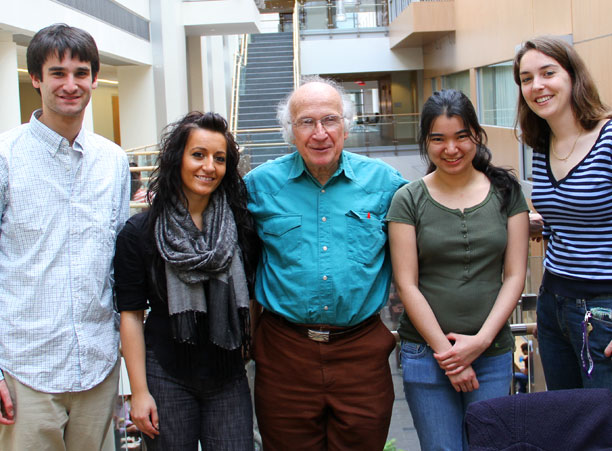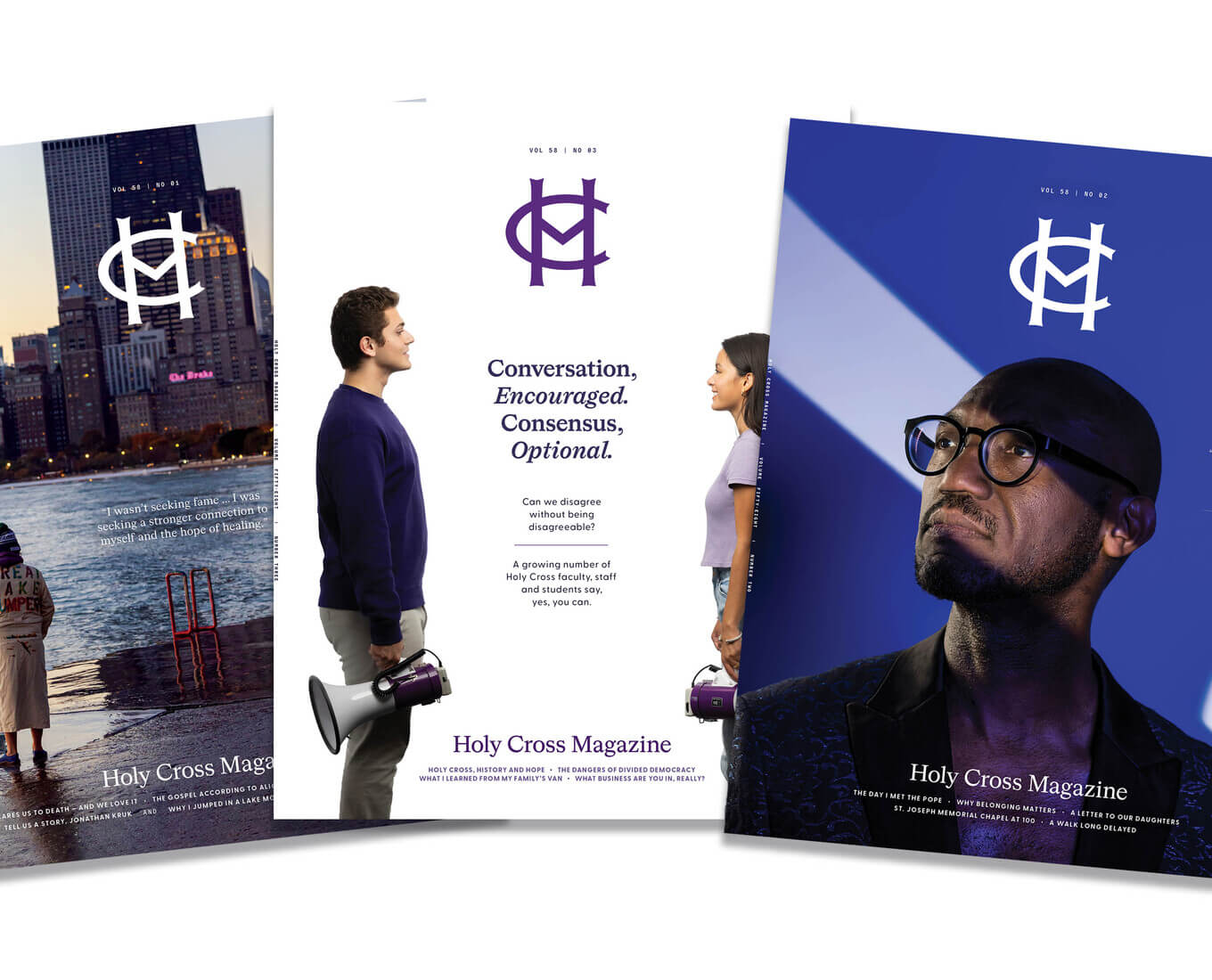Roald Hoffmann, an applied theoretical chemist at Cornell University who received the 1981 Nobel Prize in chemistry, visited Holy Cross over the course of three days this month.
His visit was made possible by an $18,500 grant that chemistry professor Richard Herrick received from the Camille and Henry Dreyfus Foundation, Inc. through their Jean Dreyfus Boissevain Lectureship for Undergraduate Institutions program. After the visit, Herrick remarked that, "Professor Hoffmann gave three great talks. Each was easy to follow showing that he is a great communicator as well as a great chemist. It was a real pleasure to have him visit Holy Cross and meet with our chemists."
Here are five highlights from his visit.
1. Noted for his ability to break down complicated scientific processes to a general audience, Hoffmann delivered a keynote lecture, titled “Chemistry’s Essential Tensions: Three Views of a Science” before a packed audience in the Hogan Campus Center Ballroom on April 6. His talk emphasized chemistry’s cultural and psychological dimension and its tie to the arts.
2. Science students and faculty also took in a more technical lecture the following day titled “The Chemical Imagination at Work in Very Tight Places” in Rehm Library. “Professor Hoffmann's current research examines the chemical consequences of applying extremely high pressures to simple molecules. As his eloquent talk pointed out, chemical intuition does not coincide with the results observed from his calculations,” says Herrick.
3. His visit wasn’t all strictly science. An accomplished writer, poet and playwright, Hoffmann attempts to bridge the distance between the arts and science. In Rehm Library, he read several of poems including “Jerry-Built Forever” about hemoglobin, providing commentary along the way about his work and how science influences his poetry. His presentation was moderated by Herrick and Bob Cording, James N. and Sarah L. O'Reilly Barrett Professor in Creative Writing.
4. Over the course of three days, Hoffmann interacted with many members of the Holy Cross community. Several students had a lunch with the Nobel winner at the science café, where they discussed their studies, post-graduate plans, and, of course, chemistry. “I was particularly intrigued by his poetry,” said chemistry major Lindsey Tonge ’11. “He kept saying that science and the humanities should not be split. He saw his poetry as a chance to bridge the gap between science and English. It was nice to hear a science professor asking us about what liberal arts classes we were taking. He didn't really want to talk so much about science. He was much more interested in us as whole people. He really is the embodiment of a liberal arts education.”
5. Faculty members from the chemistry, psychology and English departments met one-on-one with Hoffmann. English professor Maurice Geracht says, “It turned out that we had common experiences a) he in Poland, I in France, and we exchanged, in general terms our stories — we did not need to fill in details, theses were close and familiar enough; b) we are the same age, came to the United States within months of each other, grew up as teens in Queens N.Y., and while we did not go to the same high school or college, we knew many of the same neighborhood kids, hung around the same places, and had similar social lives.” They also talked about current common interests, including poetry and narratives in graphics illustrations. “It was fun and we packed in a lot in 30 minutes. He is a joy to talk with primarily because is passionately and widely curious about what is at hand, and genuinely eager to connect even with the person he just barely meets. He is very generous, and out of the blue he gave me a signed copy of ‘Soliton,’ a collection of his poems.” 
5 Highlights From Nobel Laureate Roald Hoffmann’s Visit to Holy Cross
Read Time
3 Minutes
